#malawian history
Text
Modern Day Shorts #18
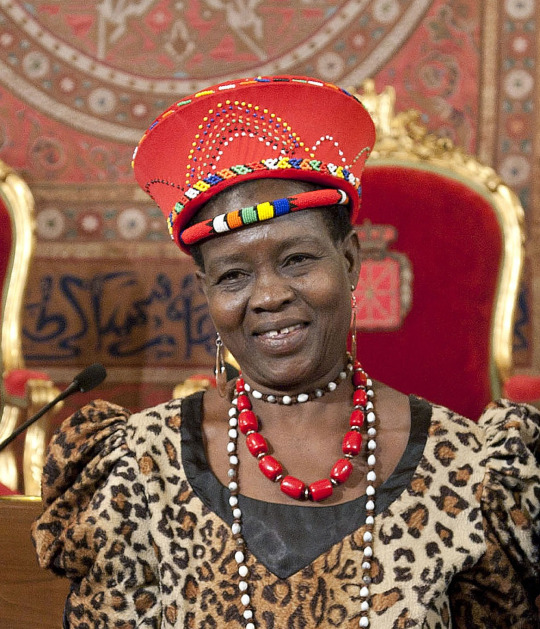
This is the lovely Theresa Kachindamoto, Inkosi of the Dedza District in the country of Malawi. In current day times, and like she has always been, Kachindamoto is a woman on a mission. She's a women's and children's rights activist who advocates for the education of children, abolishment of child marriage, and equality of young women in several African nations.
She is the first female African chief. She was simply informed one day as a college student that she was made senior chief of the Dedza District. Returning home she witnessed first hand the chaos of child marriage and intense poverty plaguing Malawi. Malawi itself has one of the highest child marriage rates in the world.
Kachindamoto took her new role incredibly seriously, and got to work immediately. She's annulled thousands of child marriages in the past years, through commands, lawmaking, and cultural authority.
Education of children, especially young girls is very important to Kachindamoto. The woman has created parent ran networks that help keep children in schools as well, and her work doesn't stop in her home district. She is a strong activist. Despite receiving death threats and resistance, Kachindamoto refuses to back down.
She plans to be chief until her death, and fight until that happens.
#history is now#malawi#african history#2010s#2020s#current day#modern day#malawi history#malawian history#history#idols#child marriage#women's rights#children's rights#activism#activist#activists
40 notes
·
View notes
Text
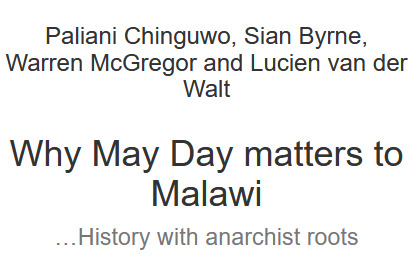
Conclusion: May Day today
The Haymarket Tragedy remains a symbol of countless struggles against capitalism, the State and oppression. Freedoms won in recent times rest on the sacrifices of martyrs like the IWPA anarchists, and the Malawian workers of 1959, 1992 and 1993.
May Day is a symbol of the unshakeable power of working class solidarity, and of remembrance for martyrs. It can serve as a rallying point for new anti-capitalist, participatory-democratic left resistance.
We need to defend and extend the legacy of the Haymarket affair, and to build the working class as a power-from-below for social change.
#history#Malawi#May Day#labor#malawian politics#anarchism#resistance#autonomy#revolution#community building#practical anarchism#anarchist society#practical#anarchy#daily posts#communism#anti capitalist#anti capitalism#late stage capitalism#organization#grassroots#grass roots#anarchists#libraries#leftism#social issues#economics#anarchy works#environmentalism#environment
17 notes
·
View notes
Text
All posts of the situation of 🇵🇸🇵🇸🇵🇸🇵🇸🇵🇸🇵🇸🇵🇸🇵🇸 I saw today (Fri, May 04.):
https://www.tumblr.com/i-am-aprl/748998951171145728/university-of-texas-at-austin-students-standing?source=share
https://www.tumblr.com/soon-palestine/749199263502860288?source=share
https://www.tumblr.com/treecove/749584003650256896/report-hamas-accepts-gaza-cease-fire-deal?source=share
https://www.tumblr.com/sayruq/749129824663142400/exclusive-israel-planning-ring-of-checkpoints-to?source=share
https://www.tumblr.com/sayruq/749315012685856768/pentagon-chief-contradicts-bidens-claim-of-no?source=share
https://www.tumblr.com/sayruq/749428292049928192/malawi-breaks-silence-on-malawians-arrested-in?source=share
https://www.tumblr.com/sayruq/749395979321606144/iran-university-offers-scholarships-to-expelled-us?source=share
https://www.tumblr.com/sayruq/749241345821097984?source=share
https://www.tumblr.com/booasaur/749209124215160832/the-rafah-invasion-would-be-so-catastrophic-that?source=share
https://www.tumblr.com/good-old-gossip/749280709614632961/eyes-on-rafah?source=share
https://www.tumblr.com/totallynotcensorship/749196075208982529?source=share
https://www.tumblr.com/nando161mando/749397421122093056/keep-protesting?source=share
https://www.tumblr.com/sayruq/747947632321822720/mass-graves-discovered-in-northern-gaza-al-shifa?source=share
https://www.tumblr.com/sayruq/749216563818807296?source=share
https://www.tumblr.com/palipunk/749476863542427648/why-are-palestinians-not-allowed-to-have-any?source=share
https://www.tumblr.com/sayruq/749219134718590976?source=share
https://www.tumblr.com/liberalsarecool/748016751150858241/killing-children-in-a-playground-is-a-clear-sign?source=share
https://www.tumblr.com/sayruq/749033662136320000?source=share
https://www.tumblr.com/sayruq/748680544111460352?source=share
https://www.tumblr.com/soon-palestine/749275105687912448?source=share
https://www.tumblr.com/sayruq/749220361639460864/at-least-10000-gazans-trapped-under-neighborhood?source=share
https://www.tumblr.com/soon-palestine/749297047353638912?source=share
https://www.tumblr.com/animentality/748834718966022145?source=share
https://www.tumblr.com/sayruq/749315402030612480?source=share
https://www.tumblr.com/quhere/749409336610160640/something-incredibly-powerful-is-how-healing-these?source=share
https://www.tumblr.com/longlivepalestina/749468080505307136/zionism-means-jewish-people-deserve-a-homeland?source=share
https://www.tumblr.com/philsmeatylegss/749197322067558400/as-someone-who-is-studying-history-with-a-big?source=share
https://www.tumblr.com/witchydespoina/749410335021252608/i-think-the-french-revolutionaries-went-too-far?source=share
https://www.tumblr.com/xoxo-prettyprincess/749304983248338944/tiktok-make-your-day?source=share
https://www.tumblr.com/sayruq/749187317145763840?source=share
https://www.tumblr.com/xoxo-prettyprincess/749510438812794880/tiktok-make-your-day?source=share
https://www.tumblr.com/politijohn/749277446898155520/source-source?source=share
https://www.tumblr.com/nando161mando/749401484348801025/how-weird-would-it-be-if-no-one-was-protesting?source=share
https://www.tumblr.com/the-virginia-mothman/749491659218255872/anyone-who-follows-me-please-check-out-my?source=share
https://www.tumblr.com/sayruq/748682805324693504?source=share
https://www.tumblr.com/helpimagirlboyfailure/749547277988872192?source=share
https://www.tumblr.com/politijohn/749186939709685761/centrists-doing-what-they-do-best?source=share
https://www.tumblr.com/sayruq/748679511280893952?source=share
https://www.tumblr.com/memingursa/749293700676534272/the-cracking-down-on-protests-is-such-a-losing?source=share
https://www.tumblr.com/orphanbird95/748663317709668352?source=share
#free gaza#gaza strip#gaza genocide#gaza#from the river to the sea palestine will be free#gazaunderattack#gaza under fire#all eyes on palestine#palestinian genocide#rafah#jerusalem#tel aviv#iran#colombia university
20 notes
·
View notes
Photo
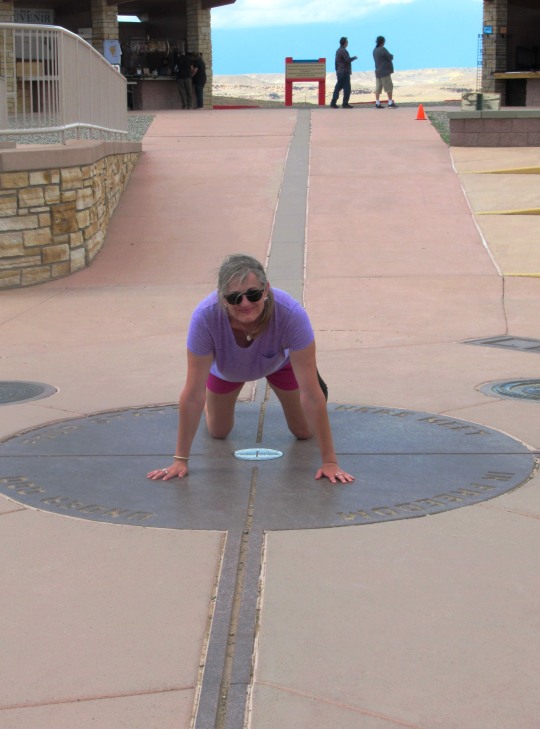
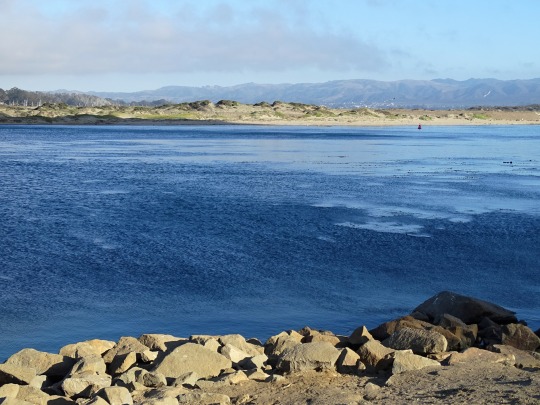





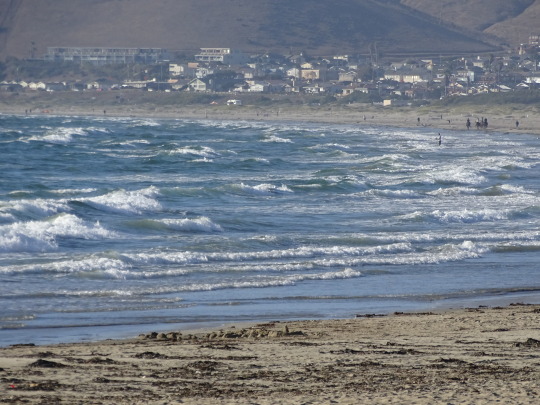

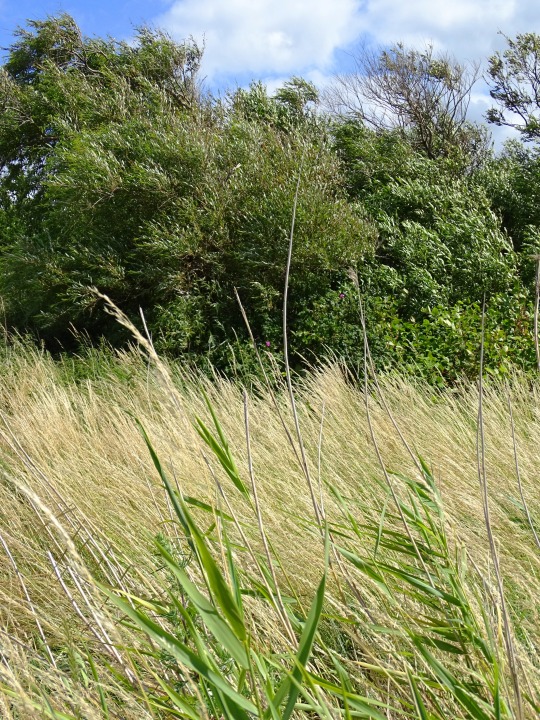
National Big Wind Day
National Big Wind Day is observed each year in the United States on April 12. The day commemorates the recording of the highest natural wind gust measured on the Earth’s surface. It was on the afternoon of April 12, 1934, that winds blowing at 231 miles per hour were recorded by Mount Washington Observatory. Mount Washington is the highest peak in the Northeastern United States at 6,288 ft. It is said to be the most notable mountain east of the Mississippi River. While it is difficult to say if the day will receive strong winds as it did in 1934, one can still expect that it will be windy on Mount Washington.
History of National Big Wind Day
Mount Washington is the highest peak in the Northeastern United States at 6,288 ft. The mountain is the most prominent in the east of the Mississippi River. It was from the Mount Washington Observatory where observers Wendell Stephenson, Alexander McKenzie, and Salvadore Pagliuca reported the record-breaking wind gusts in 1934. In 1984, the observers returned to the observatory to celebrate the event’s 50th anniversary!
The record of 231 miles per hour held for several decades. However, this record was broken in 1996. A typhoon struck a small island off of Australia with wind gusts of 256 mph. However, the reading from 1934 remains unchallenged in America.
National Big Wind Day or not, we all have to face the occasional windy day. Even without a hurricane or a tornado, it can get extremely windy. Windstorms display the power of nature – they can be dangerous, damaging, and sometimes even deadly. It can disrupt electricity and water supply, uproot trees, and even cause infrastructure damage. On the other hand, the wind is also our friend. It helps to keep us cool on a hot day. Wind also powers the sails of mighty ships. Wind-powered turbines are dotting the landscape globally. These turbines provide increasing amounts of clean electricity and help to build a sustainable future.
National Big Wind Day timeline
1888Wind Power Generation
The first known U.S. wind turbine created for electricity generation is built.
1897Wind Power Plant
The first wind power plant is established in Denmark.
1900The Great Galveston Hurricane
The deadliest hurricane in American history is recorded.
2001William Kamkwamba
The Malawian inventor gains fame for using wind turbines to power the appliances at his home.
National Big Wind Day FAQs
When was the windiest day?
On April 12, 1934, the staff of the Mount Washington Observatory in New Hampshire, recorded the highest surface wind ever measured on Earth. This big wind was officially recorded at 231 miles per hour.
Where is the windiest place on Earth?
It is not just Antarctica’s temperatures that are so extreme. Wind speeds on the continent often exceed 100 mph each winter.
What is the least windy state?
The top five least windy states are Mississippi, Florida, Kentucky, Georgia, and Alabama.
How To Observe National Big Wind Day
Share your story
Visit an observatory
Advocate for green fuel
Hold onto your hats and umbrellas while sharing your windy day stories on National Big Wind Day. Invite your friends and family to do the same.
Visit an observatory near you on National Big Wind Day to find out more about how they study atmosphere changes, weather, and wind changes.
Highlight the sustainability and efficacy of wind turbines and mills on National Big Wind Day. Speak to your counselor about how these can be used to generate power.
5 Facts About Wind Power That Will Blow Your Mind
Wind power has been around for centuries
Wind turbines are complex
It is becoming popular
Wind technology is bird-friendly
Hawaii has the world’s largest wind turbine
Windmills are often associated with Holland but date back as far as Ancient China in 2000 B.C.
A single wind turbine has around 8,000 different parts.
Wind energy is the fastest-growing renewable energy source in many countries.
Wind farms have taller and slower-moving blades which are safer for birds.
It stands 20 stories tall and has blades the length of a football field.
Why National Big Wind Day is Important
It reminds us of the incredible powers of nature
It’s a reminder to be careful
It gives us ideas for a green future
National Big Wind Day reminds us of the fury and incredible powers of nature. A strong gust of wind is powerful enough to remind us how inconsequential we are.
National Big Wind Day also reminds us to be careful while heading out on a windy day. Take stock of your hats, umbrellas, and raincoats.
When the winds are strong on National Big Wind Day, it gets us thinking of sustainable energy. Use the day to think about other green fuels and how to incorporate them into your life.
Source
#Morro Bay#Louis M. Martini Winery#St. Helena#Napa Valley#Pacific Ocean#Sierra Nevada#Colorado#summer 2022#waves#travel#vacation#landscape#cityscape#Arizona#New Mexico#Utah#Sweden#seascape#Atlantic Ocean#Frillesås#flora#grass#tree#windy#original photography#2020#National Big Wind Day#12 April#West Coast#BigWindDay
4 notes
·
View notes
Photo

On July 6, 1964, Malawi became an independent nation. In this letter, Kwame Nkrumah writes to Hastings Kamuzu Banda about Malawi's upcoming independence celebrations. At the time, Banda was Malawi's prime minister. He would become the nation's president at Malawi's independence. (📷H.K. Banda Archive, African Studies Collection, Indiana University, Bloomington) #OurHistoryOurStories #TheNanaProject #Ghana #Malawi #Nkrumah #Banda #GhanaHistory #GhanaianHistory #MalawiHistory #Malawian #MalawianHistory #AfricanHistory #BlackHistory #History #AfricanIndependence #MalawiIndependenceDay https://www.instagram.com/p/CCTwPptpLrI/?igshid=r65taz8aytdj
#ourhistoryourstories#thenanaproject#ghana#malawi#nkrumah#banda#ghanahistory#ghanaianhistory#malawihistory#malawian#malawianhistory#africanhistory#blackhistory#history#africanindependence#malawiindependenceday
4 notes
·
View notes
Text
Linny Hoo
I watched a music video, Linny Hoo, that's a viral Internet sensation. It's a mash up between a young Malawian Gospel singer, Patrice Namadingo and another Malawian musician Giddess Chalamanda who was 90 when the video was recorded in 2020.
Since portions of the video went viral, the story of Giddess Chalamanda has thickened a lot. I won't try to tell the story here because part of the charm of Internet sensations is the links and connections that people follow once curiousity is piqued.
One of my curiosities was that Giddess wrote a song in the 1960s entitled "Buffalo Soldier." The song features prominently in stories about Giddess and how he dreamed of visiting the USA. He did visit in 2016.
I can’t find the link that sent me down a rabbit hole about the song, but it suggested that Giddess may have read a book By William Leckie and Shirely Leckie, The Buffalo Soldiers.
William Leckie served in World War II and according to his obituary:”
“[H]e briefly commanded an African American battalion of soldiers, and the prejudice they encountered while serving in uniform later led him to write the history of black cavalrymen in the post-Civil War army in the American West.”
Shirley Leckie is an academic historian and among her published works is a biography Angie Debo: Pioneering Historian. Debo was a historian of renown. The Wikipedia article on Debo begins:
“Angie Elbertha Debo (January 30, 1890 – February 21, 1988),[1] was an American historian who wrote 13 books and hundreds of articles about Native American and Oklahoma history.[2] After a long career marked by difficulties (ascribed both to her gender and to the controversial content of some of her books), she was acclaimed as Oklahoma's "greatest historian"[3] and acknowledged as "an authority on Native American history, a visionary, and an historical heroine in her own right."[4]”
My links from song to stories of American historians is idiosyncratic. Some of my favorite stories are about how songs jump borders. Idiosyncracy and personal links are part of how songs do it. Millions of people have listened to Namandingo and Giddess thanks to the Internet. Giddess Chalamanda singing about buffalo soldiers has sparked people's curiousity around the globe. Our lives gain meaning when we’re interested in stories about people and the historical contexts. Simple as they maybe, songs have a remarkable quality of sharing meaning acorss differences.
The Global Voices article on Namandingo is a great place to begin exploring music of Malawi, as is the Music of Malawi blog.
8 notes
·
View notes
Text
Tips and tricks for travelling in Africa. Ultimate guide
written by Makaojr
April 14, 2019
You’ve finally taken the plunge and booked that ticket for an epic African adventure, you’ve planned a rough itinerary, picked your safari, and soon you’ll be on your way – hooray!
From the incredible natural environment to the rich cultural history, the friendly locals to the vibrant markets, Africa has everything, sometimes all at once. There’s just something about this fascinating continent that pulls you in and keeps you wanting to return over and over again. But there’s no denying that it can also be a daunting place to travel for even the hardiest of explorers!
We recently spent 4 months travelling through southern and central Africa, and we compiled all the things we either learnt along the way (through misfortune or trial and error!), or wish we’d known before we left for you, so you can focus on having the stress-free African adventure of your dreams!

How to speak the language
If you’re worried you’re going to get stuck at the airport in Tanzania forever because you can’t direct your taxi driver in fluent swahili, stay calm.
You’ll be mighty relieved to discover that despite the 1,500-2,000 local languages spoken in Africa, English is actually an official language in many countries (along with German or French in a few countries!).
Don’t miss out by being lazy and relying solely on English though; learn some key phrases. The locals will appreciate it and you’ll have a much richer experience for it – like the time a friendly Malawian fruit stall owner threw in a few extra pieces because we attempted our best Chichewa with him!
What the locals are like
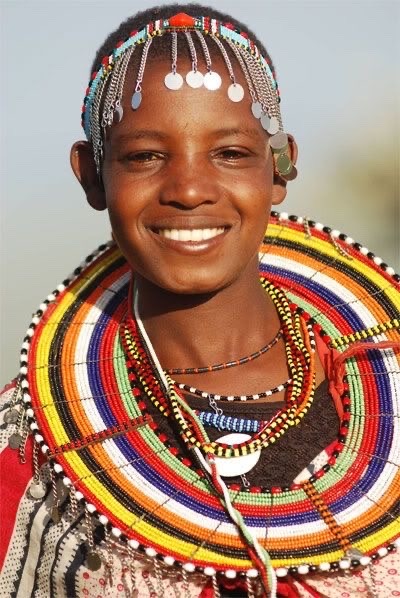
Forget what you’ve seen in the movies; collectively, Africans are some of the friendliest people on the planet. It’s common to be greeted with a huge smile and hello, and most are keen to learn your name, where you’re from and why you’re visiting.
You’ll probably encounter the phrase ‘Mzungu’ being thrown your way – often by locals smiling as they wave out of car windows or pass you on the street. The literal translation from Swahili is ‘person who wanders without purpose’, though these days it’s used to describe any white foreigner. It’s mostly said in a friendly, joking way – so try not to take offence.
It’s also important to remember that Africa as a whole is very religious (Christianity and Islam are widely practiced) and quite conservative so be respectful of this in your speech and dress.
How to avoid border hassles
Unfortunately corrupt border processes are one aspect of African travel that can be seriously frustrating for travellers.
Most of the time you’ll pass with no issue, other times you may have to wait hours for your passport to be processed without explanation, or be asked to pay a corrupt official a bribe. Then there are the touts offering to exchange your money at rates that are totally ridiculous, or trying to sell you anything from bangles to samosas (side note: always buy the samosas, guys).
Thankfully, we managed to make it through eight different border controls with minimal hassle, and you can too, by following these tips:
Be informed: Know your visa requirements before visiting any country in Africa. Get in touch with your local embassy before travelling, or pay a visit to Project Visa for answers to all your visa-related questions.
Be organised: While you can get most visas at the individual points of entry, arranging them ahead of time saves a tonne of hassle (and sometimes, money!) later.
Be money smart: Always carry spare US dollars just in case. If you need to change money on the border, always know the exchange rate before you get there and bargain hard.
Be stubborn – if someone looks like they’re deliberately holding things up to make you pay to “rush it through” firmly (and politely!) ask to have your passport back. If you’re certain that your visa meets all the requirements but you’re being asked to pay more to get it approved, decline and ask to speak to another official.
Above all else: approach the process with a smile and have a laugh. It’s easier that way!
How to travel around
One of the best things about travelling in Africa is no matter where you are or where you want to go, getting from A-to-B is always possible. How you get from A-B however, is another story altogether.
Taxis, tuk tuks, mopeds, rickshaws, you name it… If it has wheels and appears capable of travelling some distance, you can probably travel on it. You might find yourself sitting on a flight or bus, crammed into a local mini bus with 25 other people (and the odd goat or chicken!), or hitching a ride in the back of a pick-up with half a village heading home from the markets.
For the record: travelling by mini-bus is an African rite of passage and we totally recommend embracing the uncomfortable seat and cramped conditions for this insight to how the locals live!
For a journey you can relax into, our tips are:
Always travel by day. Always.
Always wear your seatbelt
Don’t expect to leave or arrive on time – things run on Africa time here!
You may, or may not, get a seat. You may sit in the aisle of the bus for 5 hours with a chicken pecking at your head. Roll with it – it’s all part of the adventure!
For most mini bus journeys, you can negotiate your fare
Never pay a “bag storage fee” on large buses. It’s a scam – your ticket price includes your baggage.
Accommodation
From tailor-made luxury safari tents where you can live like Prince Harry, through to your standard backpacker dorms where snore-proof earplugs are a must – the options of where to lay your head in Africa are many and varied.
Many travellers actually choose to camp their way through Africa (we often did!), because the camping facilities are accessible, safe, full of good amenities, and super cheap. Plus, what better way to make new friends than by sitting round the campfire swapping stories about your day?!
Larger cities have all the usual accommodation options, the further into the countryside you venture, the less options are available. Don’t fear though, you’ll ALWAYS find somewhere to rest up after a hard day’s adventuring!
Things to consider:
Always book accommodation well in advance during peak season (May – October). Places like Namibia are extremely popular, with very limited accommodation in desert areas.
Use guide books, online reviews or local recommendations. Does it get good reviews?!
Does your accommodation have a safe, lockers or locks?
Is there a night watchman/security to make sure you and your belongings are safe overnight?
How to stay healthy
Medication & health: Check with your GP about what vaccinations and medication you’ll need before you depart.
Hot tip: Most countries require Yellow Fever vaccination proof just to enter the country.
We also packed the following to keep us fighting adventure-fit on the road:
Anti malarial medication
Antibiotics
Painkillers
Antihistamine
Iodine tablets
Hydrocortisone cream
Insect repellent: DEET is your new best friend!
* Sadly, though the lakes in Africa look inviting, many are home to a horrible parasite called Bilharzia. We’re not in the business of horror stories, so we’ll leave you to investigate the delights of that one yourself – but you DO NOT want to get it. Always check with locals before taking the plunge.
Water: There’s a pretty common misconception that there’s no clean drinking water in Africa, but we’re here to tell you it is possible to drink water straight from the tap in South Africa, Namibia, and parts of Zambia and Botswana. Head north and you’ll need to be cautious, but carry iodine tablets and you’ll be fine!
Food: All you really need to know is that food in Africa is delicious. It’s also mostly high quality – though perhaps avoid meat in remote areas due to a lack of proper refrigeration.
How to stay safe
We actually felt more safe in African countries than we did in other regions of the world we’ve visited. However, as always it pays to do your research before you go.
Keep the following in mind and you’ll have a stress-free trip!
Leave the flashy jewelry and designer labels at home – they’re not practical, and make you a target instantly.
Wear a money belt OR only take a day’s worth of cash out with you.
When taking money out at an ATM, be aware of your surroundings. If something seems suspicious, move along quickly.
We’re photographers, which means we always travel with big cameras and even bigger lenses. But you’d never know, because they’re safely locked away in our bags till needed. Don’t make yourself a target by waving yours around!
Don’t walk the streets at night by yourself, especially in larger cities or towns. If you’re out late, take a taxi or Uber, every time.
Pickpockets exist here as they do everywhere, so if you’re visiting markets, bazaars, train or bus stations be extra careful.
Going it alone
Africa is a wonderful place to travel solo. If you’re open, you can have wonderfully rich experiences while meeting incredible people. You’ll also find that it’s pretty safe – any dangers that exist for both males and females are pretty the same as anywhere else you’d travel to.
Where possible, follow these tips and you should have no issues:
Be cautious when travelling to remote regions
Don’t travel alone at night
Register your travel plans with your government
Keep in regular contact with members at home
Money matters
Africa isn’t a cheap holiday by any stretch – generally the daily costs for a traveller are much higher than in Asia or even South America.
Budget around $100USD per day per person for transport, accommodation and food. Safaris and adventure activities bump up the cost substantially, so you’ll need to allocate more for those.
There are 54 currencies in Africa, so things can get tricky if you’re travelling to multiple countries. Here are a few tips to handle it all:
Most southern African countries have ATM’s or credit card facilities. If not, it’s best to find a local bank and stock up on currency.
If you have a large amount of currency left over when leaving a country, exchange it at the border with a reputable source. Only in extreme circumstances should you use street vendors
Always hide at least $200 USD somewhere safe in case of emergencies
Credit card fraud is big time in Southern Africa, so be wary. We had our cards skimmed in South Africa and temporarily lost AUD$1500!
Tipping is generally expected, though it varies region to region
Staying scam-free
Our general rule of thumb is “if it sounds too good to be true, it probably is”; live by this in Africa and you should be okay.
Here’s what to avoid:
People offering a good or service (e.g. tour) for free, including tours, only to charge exorbitantly at the conclusion of the service
Fake products or tickets being sold at inflated prices
Payment for stored baggage on bus rides
Insisting on carrying baggage at airports or bus depots, then demanding a large ‘tip’
Over inflated taxi or bus rides – always agree on a price first!
People posing as refugees, students or orphans begging
Other ‘payments’ at border crossings, including health assessments or for bogus documents
Be mindful of resources
Electricity, or lack of it, is big issue in Africa. Many areas have it, yet over 600 million people still go without. As technology develops so does access, however if you are travelling, please take this into consideration. Switch those lights off and unplug your chargers!
We recommend carrying a worldwide travel adaptor and a solar charging device (not all rest camps will have consistent access to power!).
Same goes for water – Africa is a dry continent, and has long-suffered droughts. Short showers = benefit for all.
14 notes
·
View notes
Text
We take a look at some of the women who have risen above the system and made history with their leadership endeavors.
Sylvie Kinigi (Burundi, February – October 1993)
Africa’s first female president, Slyvie Kinigi. She was the Prime Minister of Burundi from February 10, 1993 to October 7, 1994. During this period, she served as the acting President of the country from October 27, 1993 to February 5, 1994 when the incumbent president Melchior Ndadaye was shot along with 6 of his cabinet members. After his death, Kinigi gathered 15 ministers to continue to govern the country.
Ivy Matsepe-Cassaburi (South Africa, September 2005)
Matsepe-Cassaburi served temporarily as the acting president of South Africa when the president and his vice were out of the country for four days in September of 2005. She was also selected by the cabinet to serve as the constitutional and official head of state for an interim period of 14 hours on September 25, 2008 following the resignation of president Thabo Mbeki and the taking of office by the Kgalema Motlanthe.
Ellen Johnson Sirleaf (Liberia, January 2006 – January 2018)
Ellen Johnson Sirleaf is Africa’s first elected female president and served two consecutive terms, winning the 2005 and 2011 presidential elections. She had initially run for the same office in 1997 against Charles Taylor but was beaten to it. During her time, she was elected Chair of the Economic Community of West African States in June of 2016.
Rose Francine Rogombe (Gabon, June 2009 – October 2009)
Rose Francine Rogombe served as interim president of Gabon from June 2009 to October 2009 after the death of president Omar Bongo. As president of the Senate at that time, she automatically became the Head of State in accordance with the Gabonese constitution. Rose died in 2015, aged 72.
Agnes Monique Ohsan Bellepeau (Mauritius, March – July 2012 and May – June 2015)
Agnes Monique Ohsan Bellepeau was acting president of the Mauritius from March 31, 2012 – July 21, 2012. This was the transition period between the resignation of then president, Anerood Jugnauth to the inauguration of the new President Kailash Purryag. She was called upon again to act when Purryag resigned until new president, Ameenah Gurib was inaugurated.
Joyce Hilda Banda (Malawi, April 2012 – May 2014)
Banda served the Malawian people as president from April 7, 2012 to May 31, 2014 following the death of President Bingu wa Mutharika. She was the country’s fourth president. She had earlier made history, becoming the country’s first female Vice President from May 2009 to April 2012. In 2014, Forbes named her the 40th most powerful woman in the world and the most powerful woman in Africa.
Catherine Samba (Central African Republic, January 2014 – March 2016)
Catherine Samba Panza became the Acting Head of State of the Central African Republic in 2014 and served until 2016. She assumed office when rebel leader Michael Djotodia resigned from his self-appointed presidency. Before she took on this role, she was the mayor of the capital city of Bangui from 2013 to 2014.
Ameenah Gurib-Fakim (Mauritius, June 2015 – March 2018)
Ameenah Gurib-Fakim was unanimously elected president of Mauritius by the National Assembly. She was selected to be a Presidential candidate in 2014 following the resignation of then President, Kailash Purryag.
Sahle-Work Zewde (Ethiopia, October 2018 – Present)
Zewde became the first elected female president of Ethiopia and currently the only female out of the 54 presidents in the continent. She took office on October 25, 2018 after being unanimously elected by members of the National Parliamentary Assembly. Prior to her election as president, she worked as Special Representative of United Nations Secretary-General António Guterres to the African Union and Head of the United Nations Office to the African Union.
Samia Suluhu Hassan (Tanzania, March 2021 – Present)
Hasan becomes the first female president of Tanzania following the death of president John Magufuli. A ruling party stalwart, she rose through the ranks until being picked by Magufuli as his running mate in his first presidential election campaign in 2015. She is set to succeed the late president until his term expires in 2025.
6 notes
·
View notes
Photo

AN AWAKENING IN DARKEST AFRICA
I am a white African, privileged to have spent my youth in one of Central Africa’s most magnificent countries. A country founded by and named after Cecil John Rhodes.
I grew up in an environment where being strong was the only option available to me. I never believed the media’s version of events and I innately knew they were far from the truth.
I watched magnificent and prosperous African countries being torn apart and I witnessed prosperity being converted into poverty.
My close friend, Dr Credo Mutwa, the great South African Sangoma (Shaman), told me about the earlier years when missionaries arrived. Under the auspices of doing good they alienated rural communities from their natural ways and traditional beliefs. They instilled the fear of death in people who had previously accepted death as the natural cycle of life. After these missionaries had spied out the lay of the land, merchants were sent in and then the military arrived.
In Northern Rhodesia, on the Copperbelt where I lived, the towns were hacked out of dense bush. Here the African people outnumbered the Europeans by many thousands. Over weekends the night sky filled with the rhythmic tribal thumping of skin drums. Those were the days when the song ‘In the jungle, the mighty jungle, the lion sleeps tonight’ regularly came over the radio and I felt the thrill and exuberance of living in Central Africa.
Here everyone lived peacefully and abundantly; of beggars and crime we knew nothing. Life was idyllic, wild and adventurous, good and uncomplicated. When we viewed our future we could see into forever.
The Federation of Northern and Southern Rhodesia and Nyasaland 1 was ruled by Britain, its colonial overseer. Britain established systems of divide and conquer. Their political manipulations infiltrated and twisted the minds of the innocent who were used as mere pawns to further the careers of political puppets whose strings were pulled by major players in games of Socialism, Communism, Marxism and Democracy.
In recent years I learned how the British Intelligence positioned into big companies, those who, with false identities and fictitious histories, lived lives of luxury when in fact, they should have been tried for war crimes against humanity. These ruthless puppets held on short strings, manipulated business to their master’s bidding.
Even as a child, I felt appalled when Britain, who had pledged that the Federation would never be split up, orchestrated its demise. After a lifespan of only ten years the Federation was dissolved at the end 1963. In July 1964 Nyasaland, a poor and overpopulated country with little potential or resources became known as Malawi. Under Hastings Banda, its Ghanaian dictator president, the ‘freed and liberated’ Malawian population were ruled with a fearsome rod.
On 24 October 1964, United Nations Day, our Northern Rhodesian flag was replaced with the flag of Zambia. Our democratically elected President Kenneth Kaunda, with his one-party state, led our prosperous country along the path of Socialism to economic ruin.
Southern Rhodesia became known as Rhodesia. Its’ Prime Minister, the Honourable Ian Douglas Smith who had the courage to stand up against the world, declared The Unilateral Declaration of Independence on Armistice Day 1965.
The now despised Britain, working to its own agenda would not let go. For over a decade Rhodesians of all races defended their country in the bloody and brutal bush-war. The puppet soldiers of opposing political parties, financed by foreign interests, fought against Smith’s regime. All their efforts contributed to the victory of their common political enemy. The sanctions imposed by multi-national organisations proved to be a blessing and led to an explosion of self-development.
However, interference from neighbouring and overseas countries eventually brought Rhodesia to its knees. The 1980 rigged election brought the Jesuit educated Marxist Robert Mugabe into power. Rhodesia became known Zimbabwe.
Britain, holding no responsibility for the mayhem it initiated, sailed home, blameless and innocent.
#kemetic dreams#britain#ghanaian#nyasaland#rhodesia#zambia#africa#dr credo mutwa#credo mutwa#zulu#malawi#united nations day
24 notes
·
View notes
Text
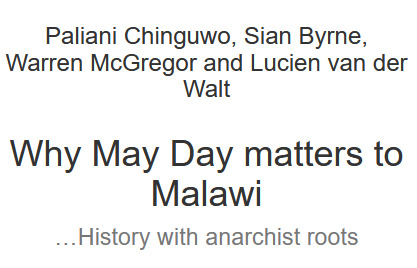
Storm centre
Chicago was the storm centre: the third largest US city where the elite flaunted its wealth in the face of poor American and immigrant workers. Chicago saw the largest 1 May demonstrations, against the backdrop of terrible working conditions and poverty, worsened by economic depression.
The power of the Chicago movement rested not just on numbers, but also on revolutionary ideas. It was the anarchist International Working People’s Association (IWPA) that led the massive march of 80 000 people through Chicago, growing during the following days to 100 000.
IWPA leadership included black women like ex-slave Lucy Parsons, immigrant workers like Spies and Americans like Oscar Neebe and Albert Parsons.
Its Pittsburgh Proclamation called for ‘the destruction of class rule through energetic, relentless, revolutionary and international action’ and ‘equal rights for all without distinction of sex or race.’
Internationalist in outlook, the IWPA and the Chicago-based anarchist Central Labour Union (CLU) it led, fought for all working and poor people, regardless of race or nationality. It published 14 newspapers, organised armed self-defence and mass movements, and created a rich tapestry of revolutionary counter-culture like music.
Anarchists rejected elections in favour of mass organising and education. Elections, the IWPA said, achieved nothing much: the State was part of the system of elite rule; politicians were corrupted into the ruling elite. Instead, most IWPA activists stressed unions as the basis for genuine workers’ and farmers’ democracy: unions should undertake factory occupations, leading to an anarchist (free) society.
#history#Malawi#May Day#labor#malawian politics#anarchism#resistance#autonomy#revolution#community building#practical anarchism#anarchist society#practical#anarchy#daily posts#communism#anti capitalist#anti capitalism#late stage capitalism#organization#grassroots#grass roots#anarchists#libraries#leftism#social issues#economics#anarchy works#environmentalism#environment
16 notes
·
View notes
Text
Media representation & Communication styles
Written by: Jumana Issa Alqasmi
ID: 110887
Date: March 11, 2019
1- Media representation of female world leaders:
Female leaders around the world, under the detailed observation of the media, they get judged not just by their qualifications and political capability but primarily by their looks and presentation in public.
Women in politics are often not in line with known female stereotypes, like being communal and responsible for the family. Instead female politicians are either displayed as career and power driven, selfish and cold or are presented in line with gender norms as soft and weak and their ability to make decisions is often questioned.
For example, Joyce Hilda Banda:
Malawian politician who was the President of Malawi from 7 April 2012 to 31 May 2014.

How Malawian media present Joyce Banda?
Criticism of Banda was very strong, criticized her by calling her a wannabe tyrant and a greedy politician who was just like most self-interested African leaders.
In her home country she was criticized as not being a serious politician, and that it appeared that Malawi was not ready for a female president. * Banda’s connection to the Cashgate affair that was regarded as the largest corruption scandal in Malawian history.
Banda was thus associated with what might called neopatrimonialism, a concept referring to a system using state resources for personal profits, and the management of official authority for private purposes.
She did not live up to the great expectations regarding Banda being the first woman president of Malawi.
In the context of gender, there were also straightforward critique by some Malawian women regarding Banda: as a woman she was seen to be too weak to aid the economy of Malawi. One author in the Malawian media contributors accused that being a woman in leadership position is not regarded as good as a male counterpart, thus women cannot lead the country.
The existing stereotypes concerning women’s inability to be in a leadership position were regarded as strong and truthful, accord.
How international media present Joyce Banda?
There often appeared references to her previous abusive marriage.
A fighter and a champion of women’s rights. She was hailed as a new kind of leader, or the face of a new Africa.
Described as Malawi’s Iron Lady, or Malawi’s Lady of Steel, and referring to her overall strength.
Represented as carrying a heavy load on behalf of other women.
Observations regarding her outward appearances and her dress sense.
In the context of motherhood, there were references to Banda’s strong grandmother, and Banda being motherly (having motherly looks), as well as being at the same time both a mother and a leader of her country.
2- How male world leaders use communication styles and techniques?
Nelson Mandela: He was not only a unique and inspiring world leader, he was also a consummate communicator:
Message Development: when reading or listening to a Mandela speech his message is consistently well constructed, audience appropriate and…consistent.
Expression: he was masterful at utilizing his facial muscles for emphasis whenever he spoke. His smile could light up any room, and served as a huge highlighter when delivering key lines.
Presence: carried himself like a man 20 years younger than his age. When speaking, it was clear he knew the power of nonverbal communication – he stood straight, shoulder’s back, no swaying, no rocking. He spoke with a measured cadence, and effectively utilized pausing to emphasize key points. Before he spoke, it was clear that a leader was on stage.
Rhetorical Devices: like legendary orators before him, Mandela artfully utilized rhetorical devices to support his messaging. Examples of devices include metaphor, anaphora, allusion and repetition.
Quotations: one of the greatest gifts that Mandela has left future orators is a treasure chest of powerful, impactful quotations to open or close a speech or presentation; or to utilize to support key messages.
Word Selection: clearly understood the power of words and language.
Barack Obama: A communication style that makes him a great orator:
He portrays an image of an highly confident and charismatic communication style while speaking when analysis is done on the baseline level. Along with this it also his personal power which increases his potential in a multifold manner. Being the president of the nation he holds a great deal of positional power and at the same time he is meant to listened to and to be liked by the audiences if his positional power is to be taken into reference. But this is not the case with his as the charm and persona carried by Barack Obama allows people to connect with him and listen to him and like him at the end of the communication process.
The sense of humor used by him for engaging people and to make them feel attentive and energized all the time. This is quite important being a communicator as this will not only break the monotony of the audiences as well as will maintain stability in their interest level as well. To mention here this is a great strength in his communication style that it acts as a ”hook” for the listeners. There is need to maintain the interest of the audiences and this increases the impact of the communication. Barack Obama holds a great strength making use of which he is capable to enhance the intensity of communication and this makes it comfortable for the speaker to be taken seriously.
Understanding of both 1 & 2:
Female leaders around the worlds are presented by media and the public eye not just with their political successes but more and more often with their outer appearances, superficialities, and private lives. On the other hand, the stereotypical male characteristics, like power-seeking, dominant, confident and combative, are better in line with political responsibilities and expectations, male politicians are often better represented by the media.
There are a number of communication styles and techniques that are particularly important for leaders, to reach their people or nation and achieve their goals.
https://jyx.jyu.fi/bitstream/handle/123456789/50323/1/URN%3ANBN%3Afi%3Ajyu-201606153087.pdf
1 note
·
View note
Text



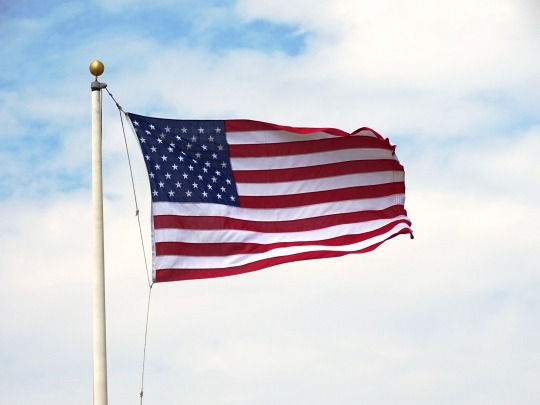

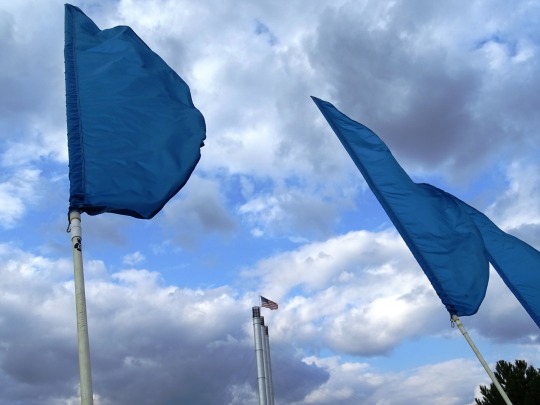


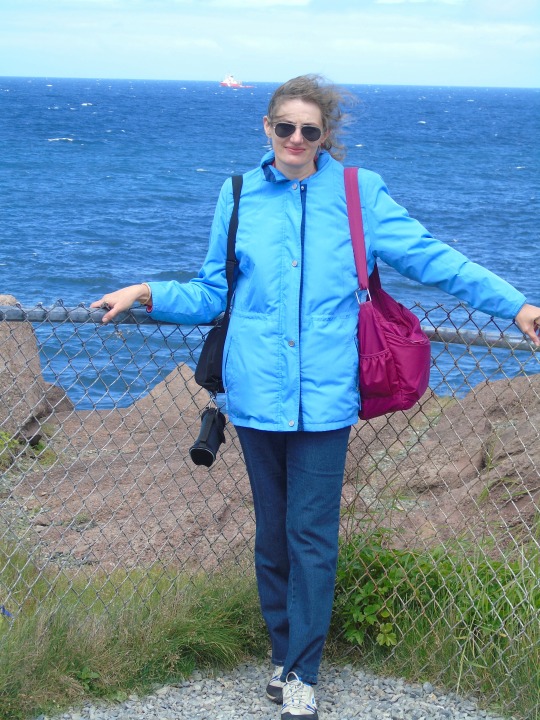
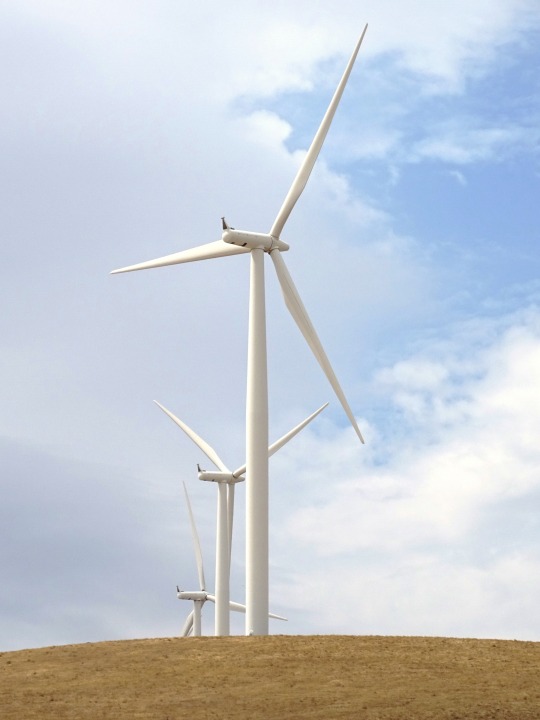
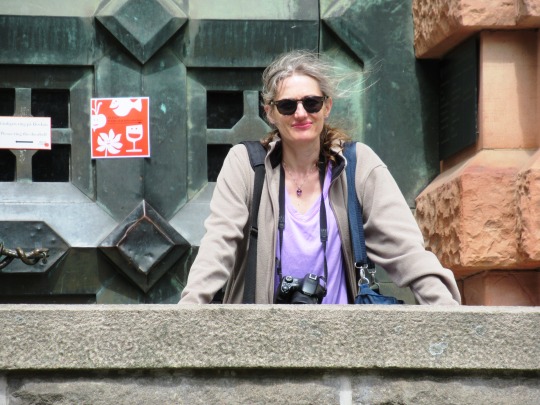
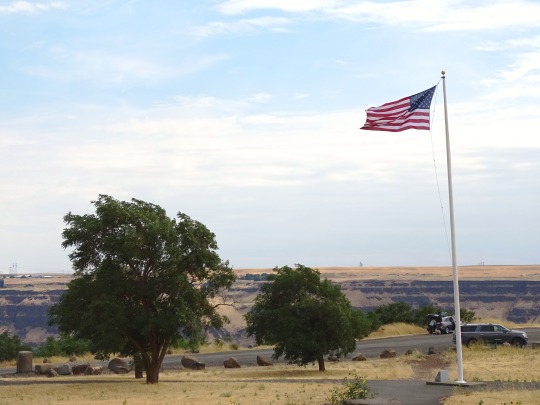


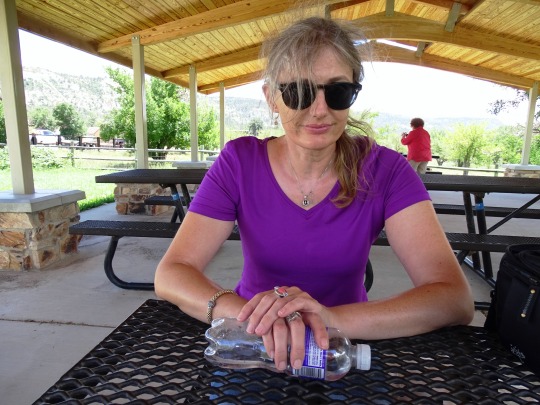





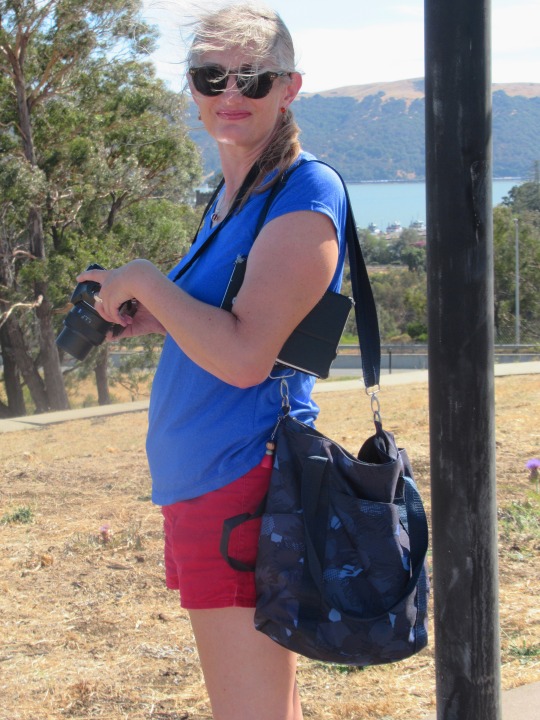

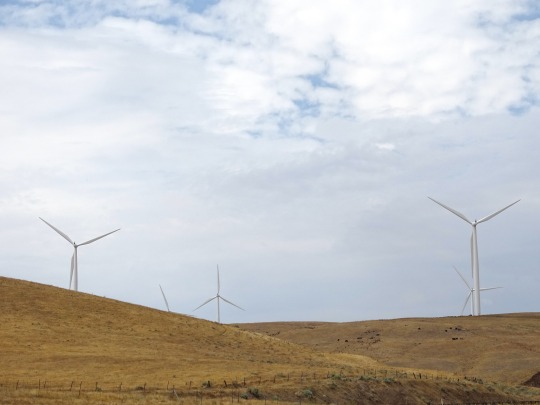


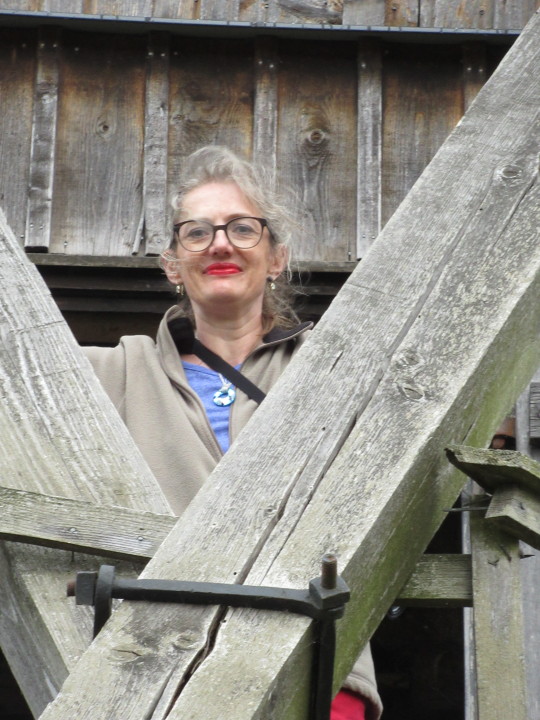




National Big Wind Day
National Big Wind Day is observed each year in the United States on April 12. The day commemorates the recording of the highest natural wind gust measured on the Earth’s surface. It was on the afternoon of April 12, 1934, that winds blowing at 231 miles per hour were recorded by Mount Washington Observatory. Mount Washington is the highest peak in the Northeastern United States at 6,288 ft. It is said to be the most notable mountain east of the Mississippi River. While it is difficult to say if the day will receive strong winds as it did in 1934, one can still expect that it will be windy on Mount Washington.
History of National Big Wind Day
Mount Washington is the highest peak in the Northeastern United States at 6,288 ft. The mountain is the most prominent in the east of the Mississippi River. It was from the Mount Washington Observatory where observers Wendell Stephenson, Alexander McKenzie, and Salvadore Pagliuca reported the record-breaking wind gusts in 1934. In 1984, the observers returned to the observatory to celebrate the event’s 50th anniversary!
The record of 231 miles per hour held for several decades. However, this record was broken in 1996. A typhoon struck a small island off of Australia with wind gusts of 256 mph. However, the reading from 1934 remains unchallenged in America.
National Big Wind Day or not, we all have to face the occasional windy day. Even without a hurricane or a tornado, it can get extremely windy. Windstorms display the power of nature – they can be dangerous, damaging, and sometimes even deadly. It can disrupt electricity and water supply, uproot trees, and even cause infrastructure damage. On the other hand, the wind is also our friend. It helps to keep us cool on a hot day. Wind also powers the sails of mighty ships. Wind-powered turbines are dotting the landscape globally. These turbines provide increasing amounts of clean electricity and help to build a sustainable future.
National Big Wind Day timeline
1888Wind Power Generation
The first known U.S. wind turbine created for electricity generation is built.
1897Wind Power Plant
The first wind power plant is established in Denmark.
1900The Great Galveston Hurricane
The deadliest hurricane in American history is recorded.
2001William Kamkwamba
The Malawian inventor gains fame for using wind turbines to power the appliances at his home.
National Big Wind Day FAQs
When was the windiest day?
On April 12, 1934, the staff of the Mount Washington Observatory in New Hampshire, recorded the highest surface wind ever measured on Earth. This big wind was officially recorded at 231 miles per hour.
Where is the windiest place on Earth?
It is not just Antarctica’s temperatures that are so extreme. Wind speeds on the continent often exceed 100 mph each winter.
What is the least windy state?
The top five least windy states are Mississippi, Florida, Kentucky, Georgia, and Alabama.
How To Observe National Big Wind Day
Share your story
Visit an observatory
Advocate for green fuel
Hold onto your hats and umbrellas while sharing your windy day stories on National Big Wind Day. Invite your friends and family to do the same.
Visit an observatory near you on National Big Wind Day to find out more about how they study atmosphere changes, weather, and wind changes.
Highlight the sustainability and efficacy of wind turbines and mills on National Big Wind Day. Speak to your counselor about how these can be used to generate power.
5 Facts About Wind Power That Will Blow Your Mind
Wind power has been around for centuries
Wind turbines are complex
It is becoming popular
Wind technology is bird-friendly
Hawaii has the world’s largest wind turbine
Windmills are often associated with Holland but date back as far as Ancient China in 2000 B.C.
A single wind turbine has around 8,000 different parts.
Wind energy is the fastest-growing renewable energy source in many countries.
Wind farms have taller and slower-moving blades which are safer for birds.
It stands 20 stories tall and has blades the length of a football field.
Why National Big Wind Day is Important
It reminds us of the incredible powers of nature
It’s a reminder to be careful
It gives us ideas for a green future
National Big Wind Day reminds us of the fury and incredible powers of nature. A strong gust of wind is powerful enough to remind us how inconsequential we are.
National Big Wind Day also reminds us to be careful while heading out on a windy day. Take stock of your hats, umbrellas, and raincoats.
When the winds are strong on National Big Wind Day, it gets us thinking of sustainable energy. Use the day to think about other green fuels and how to incorporate them into your life.
Source
#Whistler#Morro Bay#Louis M. Martini Winery#St. Helena#Napa Valley#Pacific Ocean#Sierra Nevada#Colorado#summer 2022#waves#travel#vacation#landscape#cityscape#Arizona#New Mexico#Utah#Sweden#seascape#Atlantic Ocean#Frillesås#flora#grass#tree#windy#original photography#2020#National Big Wind Day#12 April#West Coast
0 notes
Text
Discovering the world
Malawi 🇲🇼
Basic facts
Official name: Republic of Malawi
Capital city: Lilongwe
Population: 20.9 million (2023)
Demonym: Malawian
Type of government: unitary presidential republic
Head of state and government: Lazarus Chakwera (President)
Gross domestic product (purchasing power parity): $37.91 billion (2023)
Gini coefficient of wealth inequality: 44.7% (medium) (2016)
Human Development Index: 0.508 (low) (2022)
Currency: kwacha (MWK)
Fun fact: Lake Malawi is also referred to as “calendar lake” because it is 365 miles (587 km) long and 52 miles (83 km) wide.
Etymology
The country’s name means “flames” in Chewa and Tumbuka.
Geography
Malawi is located in Southeastern Africa and borders Tanzania to the north, Mozambique to the east and south, and Zambia to the west.

There are three main climates: dry-winter tropical savanna in the east and southwest and monsoon-influenced humid subtropical and monsoon-influenced subtropical highland in the southeast and west. Temperatures range from 9 °C (48.2 °F) in winter to 31 °C (87.8 °F) in summer. The average annual temperature is 21.9 °C (71.4 °F).

The country is divided into three regions, which are further divided into twenty-eight districts. The largest cities in Malawi are Lilongwe, Blantyre, Mzuzu, Zomba, and Karonga.

History
1480-1891: Kingdom of Maravi
1891-1907: British Central Africa Protectorate
1907-1964: Nyasaland Protectorate
1964: cabinet crisis
1964-present: Republic of Malawi
Economy
Malawi mainly imports from South Africa, China, and India and exports to Zimbabwe, Mozambique, and Belgium. Its top exports are tobacco, soybeans, and engine parts.
Its main agricultural products are cotton, sugar, tea, and tobacco. Services represent 56.1% of the GDP, followed by agriculture (29.4%) and industry (15.8%).

Malawi is a member of the African Union, the Common Market for Eastern and Southern Africa, the Commonwealth, and the Southern African Development Community.
Demographics
The Chewa people are the largest ethnic group (25.2%), followed by the Tumbuka (20.4%), Lomwe (17.9%), Yao (15.3%), Ngoni (5.4%), Sena (4.8%), and Mang’anja (3.2%). The main religion is Christianity, practiced by 82.3% of the population, 58.5% of which is Protestant.

It has a neutral net migration rate and a fertility rate of 3.4 children per woman. 18% of the population lives in urban areas. Life expectancy is 72.4 years and the median age is 16.8 years. The literacy rate is 62.1%.
Languages
The official language of the country is English, but the main languages are Chewa, Tumbuka, and Yao, spoken by 53.8%, 28.2%, and 16.1% of the population, respectively.
Culture
Malawians are esteemed for their kind and loving nature, and the country is known as the “warm heart of Africa”. There is a rich tradition of basketry and mark carving.
Men traditionally wear a short-sleeved shirt and pants. Women wear a blouse, a long skirt, and a headdress (duku).
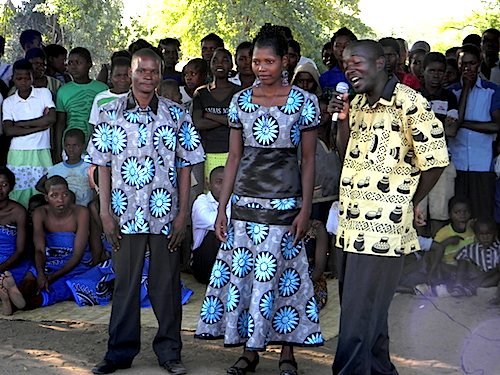
Architecture
Traditional houses in Malawi have mud bricks walls and thatched roofs.
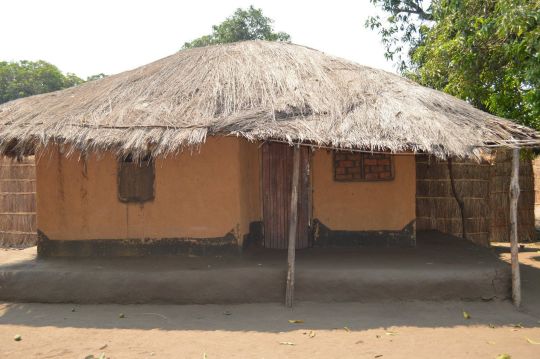
Cuisine
The Malawi diet is based on fish, meat, and vegetables. Typical dishes include chambo (a kind of fish served with nsima or rice), kondowole (fried cassava balls), mandazi (fried triangular donuts with powdered sugar), mkhwani (a stew of peanuts, pumpkin leaves, and tomatoes), and nsima (corn porridge eaten with fish or meat).
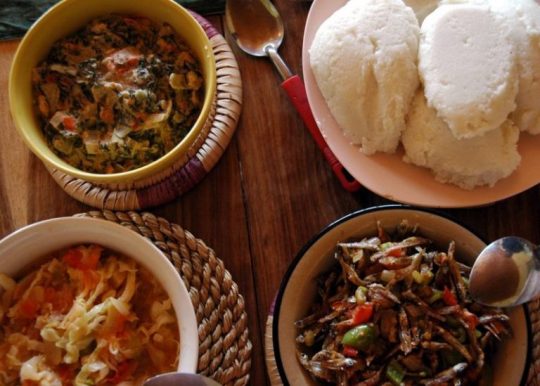
Holidays and festivals
Like other Christian and Muslim countries, Malawi celebrates Good Friday, Easter Monday, Christmas Day, Boxing Day, and Eid al-Fitr. It also commemorates New Year’s Day and Labor Day.
Specific Malawian holidays include John Chilembwe Day on January 15, Martyrs’ Day on March 3, President Kamuzu Banda’s Birthday on May 14, and Independence Day on July 6.
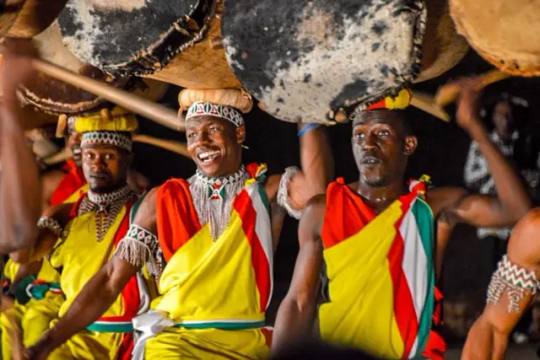
Independence Day
Other celebrations include Art in the Park, where artists exhibit their works; the Blantyre Arts Festival, which features dance, poetry, and theater, and the Lake of Stars Festival, a music festival.

Lake of Stars Festival
Landmarks
There are two UNESCO World Heritage Sites: Chongoni Rock Art Area and Lake Malawi National Park.

Lake Malawi National Park
Other landmarks include the King African Rifles Monument, the Nyika National Park, Saint Michael and All Angels Church, Saint Peter’s Cathedral, and the Vwaza Marsh Wildlife Reserve.
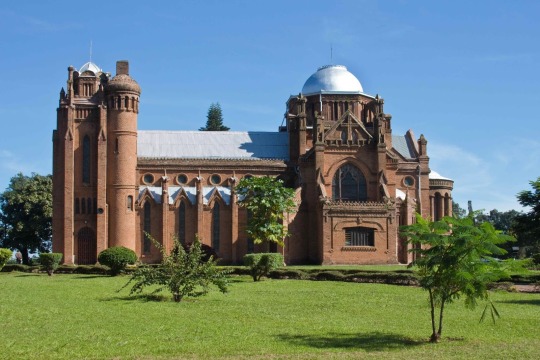
Saint Michael and All Angels Church
Famous people
Chakufwa Chihana - human rights activist
Emily Mkamanga - writer
Frank Chipasula - writer
Gertrude Webster Kamkwatira - actress and theater director
Isaac Chilemba - athlete
James Sangala - soccer player
Jane Chimaliro - netball player
Malia - singer
William Kamkwamba - inventor
Zahra Pinto - swimmer

Emily Mkamanga
You can find out more about life in Malawi in this interview and this video.
7 notes
·
View notes
Text
20/20 Tag Game: Get To Know Me
I was tagged by @fearless-foodie !
Rules: Answer 20 questions and tag 20 followers that you would like to get to know better!
Name: Jade
Nick name: Jadels, Jadeykins, Poosie
Zodiac sign: Aries. Metal Dragon (Chinese Zodiac)
Height: 5’4”
Age: 18
First language: English
Nationality: British-Malawian
Favorite fruit: Strawberries, mulberries, mango, plums, peaches
Favorite season: I kinda like all the seasons tbh
Favorite smell: Vanilla, the ocean, fresh baked stuff
Favorite color: Purple and black and pastels
Favorite animal: Dolphins, elephants, owls
Coffee, tea, hot 🍫: Tea and hot chocolate...I’ll occasionally drink coffe
Average hours of 💤: 6-8 hoursapproximately
Favorite fictional character: This is really...I can’t decide... but I quite like Hermione Granger, Chandler and Joey from Friends, Sapphira, Bianca Piper, 15-year-old Jeff etc
Dream trip: Maldives or Thailand or Malaysia or Vanuatu
Blog created: 2017
Favorite subject: English. Also History but only the mythology parts
Hogwarts 🏠: Hufflepuff/Ravenclaw I think?
Favorite artists: I don’t really follow art so I don’t have any favourites. My favourite music artists are The Parlotones, Shortstraw, Paramore, Billie Eilish, Lewis Capaldi, Unlike Pluto,Twenty One Pilots, Set It Off, Demi Lovato, Noah Kahan, Nilu, NF, LANY etc
Tagging: Anyone that wants to do this! :)
1 note
·
View note
Photo

New Guest Mix by Anderson Chimutu aka Fumbata Phiri, a first generation Malawian American who resides in the city of South Bend, Indiana.
Growing up near Chicago and Detroit, Chimutu was exposed to many legends of the regional music scene. This influenced him to get involved with various instrumental bands and djing. Now he focuses on solo productions, which integrate the use of granular sound processors and drum machines.
This new approach, coupled with the desire to represent his African heritage, has given birth to Fumbata Phiri. His first offering as Fumbata Phiri came in the form of 2020's "Decoherence", released on the Hungarian label Exiles. He followed that up with "Equipoise", released on UK label Hard Return, "Actuation" on released on Eternal Search in 2021, and now in 2022, "Liminal Space" releasing on Chicago label, Reserve Matinee ran by Michael Stumpf (FAITHFUL) and John Daniel (Forest Management). Chimutu wants to challenge the narrative surrounding African influenced music, and does so by creating what comes naturally to him. Putting forth an extension toward the future, while being cognizant of the history that has brought him to this point.
Listen: https://soundcloud.com/cachichi/32-fumbata-phiri-absolute-elsewhere
Justin Tripp and Brian Close as GEORGIA (OOH Sounds) - Story Scene 0:00
Evil Medvéd - (0_0) 4:56
Noémi Büchi - Battering Times 6:38
Joane Skyler - wink 9:37
Hiro Kone - Malady of Duration 11:27
William Fields - riveru 15:57
NZFE - FENZ_pict_test4 20:24
Fumbata Phiri - Pios Plurality 23:57
Daphne X - I can see right through me 34:24
FRKTL — Locations For An Immaterial Essence 36:28
Klpflrtr - Random 44:35
Alley Catss - chew 46:21
Yokai Kai - phonktech 48:40
Justin Tripp and Brian Close as GEORGIA (OOH Sounds) - Story Scene - Zipf's Code 50:52
ISSHU - Under the Pink Sky 54:40
Blood Room - Sun Pulse 58:23
#abstract#techno#blackcreators#experimental club#fourthworldmusic#leftfield#experimental electronic#noise#soundart#granular synthesis#drum machine#percussive
0 notes
Text
Ratlam kingdom
Ratlam kingdom
Ratlam was a monarchy under British rule. It was owned by the Malawian Agency.
The town of Ratlam in the Ratlam district of Madhya Pradesh was the capital of the state at the time. Ratlam, who was once a vast kingdom, was attacked during the Mughal emperor Aurangzeb's reign and lost his king, Ratan Singh, along with many other lands. The ruler of the state also lost his title of king. However, in 1819, the Ratlam kingdom allied itself with the British and its ruler, Sajjan Singh, was re-elected Maharaja.
History--
Ratlam was established in 1652 by Ratan Singh. He had 12 wives. The state of Ratlam was 1795 square kilometers. It was on the border of the state of Sailana. The population was 83,773 at the 1901 census. The population of Ratlam was 36,321. In the Ratlam state, opium was produced along with grain.
Ratlam was formerly considered a non-state in Gwalior, but in 1819, Ratlam was under British protection.
The state merged with the Indian Union of States on June 15, 1948.
Ruler--
For many years, the kingdom of Ratlam was ruled by the dynasty kings of the Suryavanshi Rathore dynasty. The kings of Jodhpur, Bikaner and Kishangarh also belonged to this dynasty.
0 notes